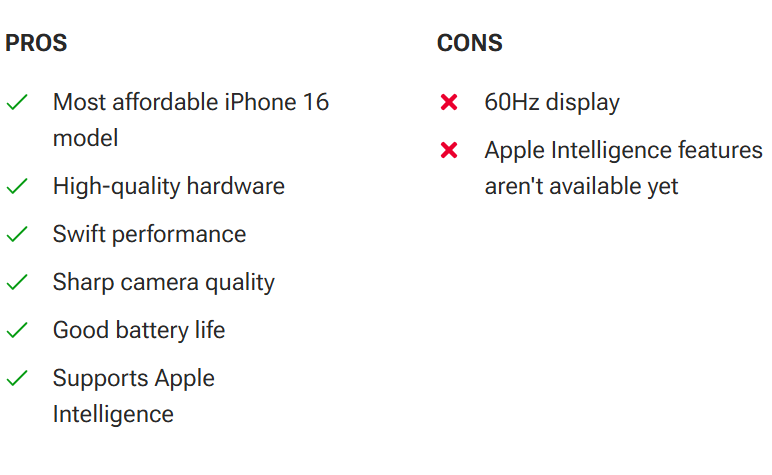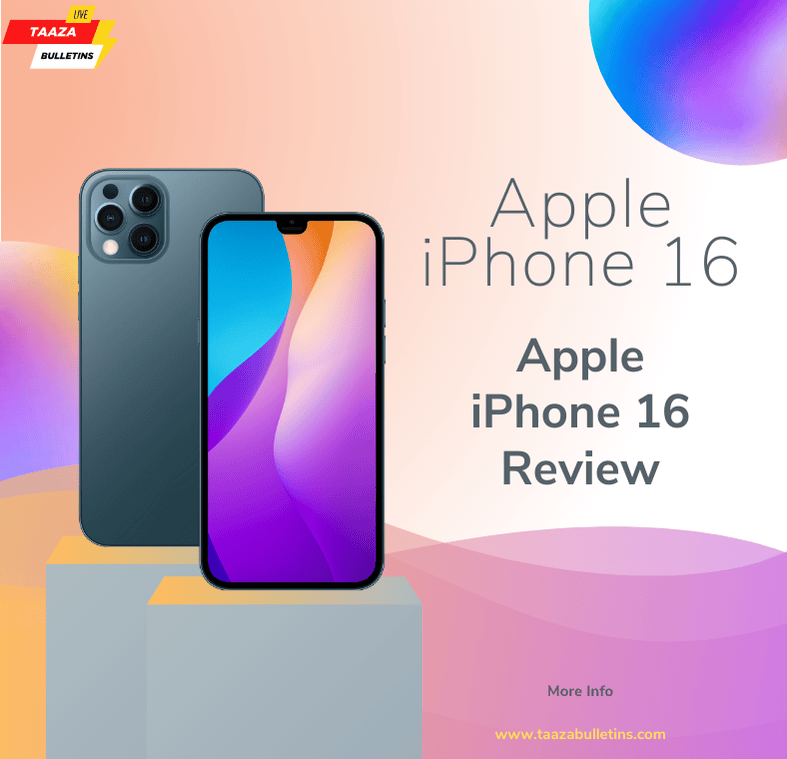The smallest and most affordable new model catches up to Pro iPhones with strong battery life, though it retains a familiar design.
Table of Contents
The iPhone 16, starting at $799, is the most economical option within Apple’s 2024 iPhone range. This year, the company has introduced several enhancements across its entire lineup, and the standard iPhone 16 has significantly closed the gap with the Pro models regarding features and performance. Notably, it includes the same Action Button and Camera Control, along with a substantial upgrade in processor and memory to support Apple Intelligence. Coupled with impressive battery life, rapid charging capabilities, advanced connectivity, and premium hardware, it represents a nearly complete offering. While content creators may prefer the additional power and professional video features of the $1,099 iPhone 16 Pro Max, the iPhone 16 remains the optimal choice for the majority of users.
Design: A Focus on Button Control
The gradual progression of the vanilla iPhone continues with each passing year. The iPhone 16 retains much of the design elements from its predecessor, the iPhone 15, yet it advances significantly due to several features that Apple has integrated throughout the entire iPhone 16 series.
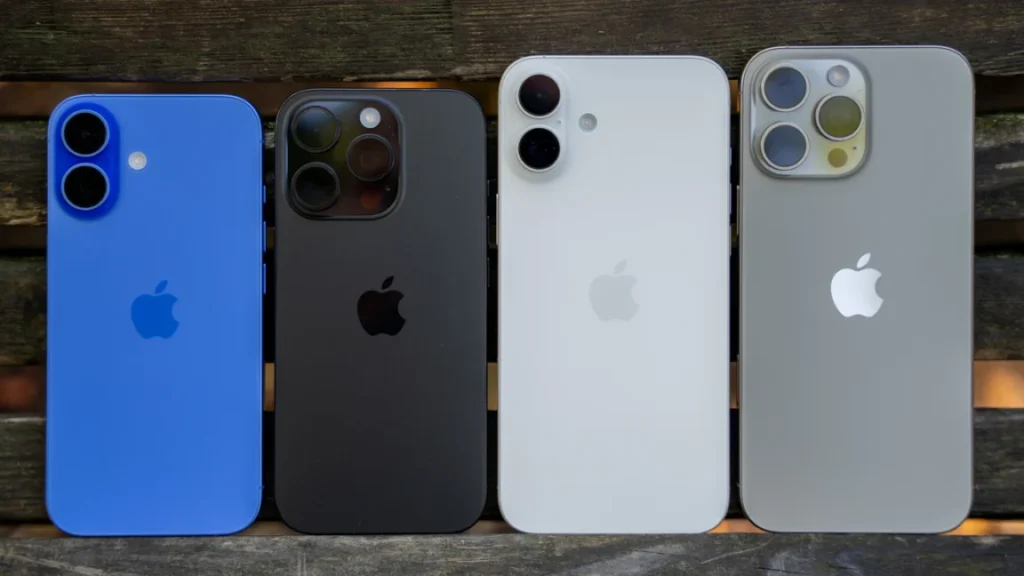
The iPhone 16 is the most compact and lightweight model, with dimensions of 5.81 by 2.82 by 0.31 inches (HWD) and a weight of 6.0 ounces. The 16 Plus, starting at $899, shares all the same features as the 16, except for the display size, measuring 6.33 by 3.06 by 0.31 inches and weighing 7.03 ounces. The 16 Pro, priced from $999, is slightly larger than the 16, with dimensions of 5.89 by 2.81 by 0.32 inches and a weight of 7.03 ounces.
The Pro Max is even larger, measuring 6.42 by 3.06 by 0.32 inches and weighing 7.99 ounces. For those seeking an iPhone that fits comfortably in hand and pocket, the iPhone 16 is an ideal choice. Competing Android flagship models are comparable in size and weight, such as the $799 Pixel 9 (6.0 by 2.8 by 0.3 inches, 7.0 ounces) and the $799 Samsung Galaxy S24 (5.79 by 2.78 by 0.30 inches, 5.93 ounces).
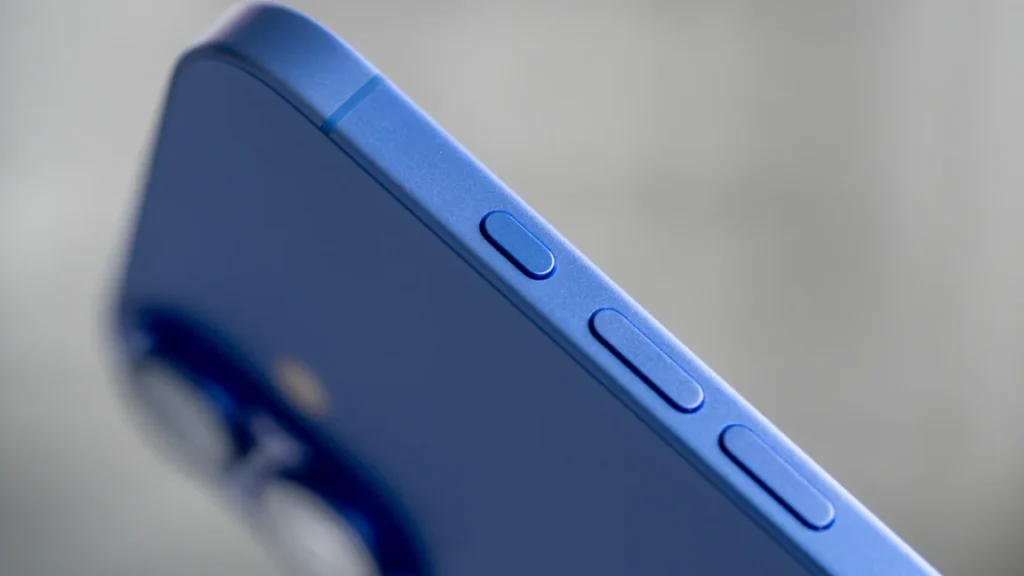
Both the iPhone 16 and 16 Plus feature aluminum frames and are protected by Apple’s Ceramic Shield on both the front and back. Apple asserts that its glass is twice as durable as Corning Gorilla Glass Victus, which is utilized by the Google Pixel 9 and Samsung Galaxy S24. The matte finishes on the frame and glass panels enhance grip slightly.
The device boasts an IP68 rating, ensuring protection against dust and water, allowing it to withstand immersion in approximately 5 feet of water for up to 30 minutes. However, unless one is confident in their ability to avoid drops, it is advisable to use a protective case. The iPhone 16 and 16 Plus are offered in five colors: Black, Pink, Teal, Ultramarine, and White. Our evaluation focused on the Ultramarine variant, which presents a striking blue hue that occasionally appears almost purple.
The iPhone 16 features two prominent new buttons that enhance its functionality. Firstly, it introduces the Action Button, which was initially seen on the iPhone 15 Pro and 15 Pro Max. This small button is positioned above the volume controls, replacing the former ringer switch. Users can customize the Action Button to perform various tasks, such as silencing the device, activating the flashlight, recording voice memos, or executing a preferred shortcut.
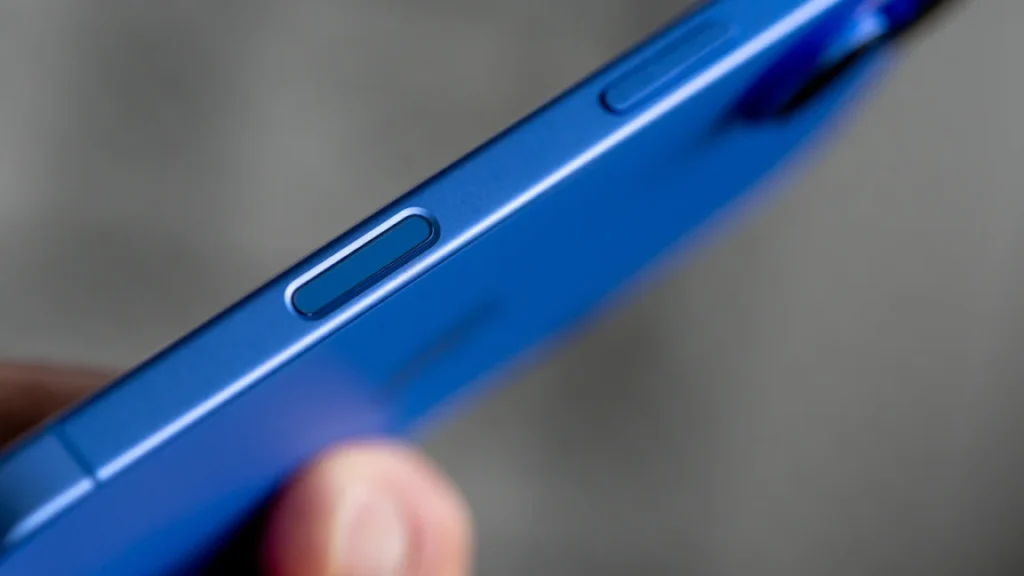
Although compact, this button proves to be highly practical. Secondly, the iPhone 16 incorporates the Camera Control button found in the Pro models, allowing for quick access to the camera for taking photos or recording videos. The other controls remain unchanged, with the power button located on the right edge and the USB-C port along with the downward-facing speaker situated at the bottom. The USB port supports data transfer speeds of 480Mbps, in contrast to the Pro models, which can achieve speeds of up to 10Gbps. Notably, US models do not include a SIM card tray, as they operate solely on eSIM technology.
Additionally, Apple has modified the arrangement of the camera module on the iPhone 16. Previously, the two cameras were positioned at an angle; however, this year, they are aligned vertically in the top-left corner. This new configuration presents a neater appearance, although the device still exhibits some wobbling when placed on a hard, flat surface.
Display: A Subtle 1-Nit Difference
Apple has introduced only minor enhancements to the display of the iPhone 16. It features a Super Retina XDR OLED screen measuring 6.1 inches, with a resolution of 2,556 by 1,179 pixels and a pixel density of 460 pixels per inch (ppi). The iPhone 16 Plus boasts a larger 6.7-inch display, offering a resolution of 2,796 by 1,290 pixels, also at 460 ppi.
Both models are equipped with static panels operating at 60Hz, lacking the always-on display functionality found in the Pro variants. Each screen can achieve a typical brightness of 1,000 nits, 1,600 nits in HDR, and a peak brightness of 2,000 nits. They support an impressive contrast ratio of 2 million to 1 and feature a fingerprint-resistant oleophobic coating. Notably, these specifications are identical to those of the iPhone 15.
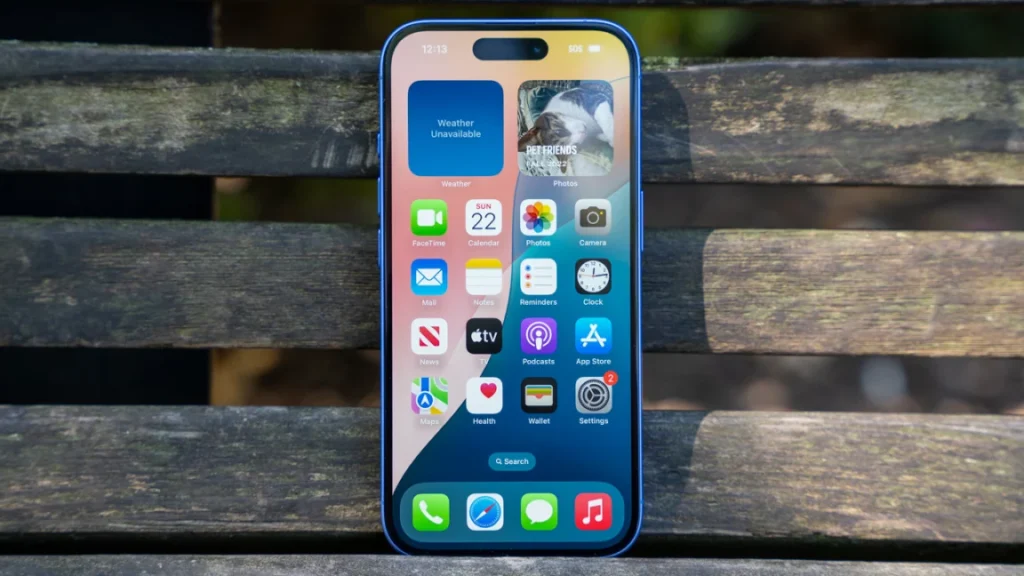
A significant new feature is the ability of the iPhone 16’s display to reduce its brightness to a mere one nit, allowing for near-black visibility in dark environments, making it possible to scroll at night without disturbing others.
In comparison, competing Android devices offer some advantages. The Pixel 9 is equipped with a 6.3-inch OLED display that has a resolution of 2,424 by 1,080 pixels and a density of 422 ppi. It can reach 1,800 nits in HDR and a peak brightness of 2,700 nits. The Galaxy S24 features a 6.2-inch display with a resolution of 2,340 by 1,080 pixels and a peak brightness of 2,600 nits. More critically, both the Pixel and S24 displays support variable refresh rates, enhancing efficiency and performance, which enables them to offer always-on display capabilities.
Given that even budget Android phones now feature fast screens, it is disappointing that Apple has not upgraded the base model iPhone in this aspect. Overall, the iPhone 16’s display performs well, providing clear visibility both indoors and outdoors, making it suitable for social media viewing. It responds promptly to user input, and the Face ID scanner integrated within the Dynamic Island ensures secure unlocking every time the device is picked up.
Performance: An Intelligent Improvement
The iPhone 16 represents a significant advancement in Apple’s silicon technology, bypassing an entire generation. In contrast to the iPhone 15, which utilized the A16 chip, and the iPhone 15 Pro, which featured the A17 Pro chip, the iPhone 16 directly adopts the A18 chip. This new A18 chip is equipped with two performance cores, four efficiency cores, five GPU cores, and 16 Neural Engine cores (NPU). Additionally, the iPhone 16 has increased its RAM from 6GB to 8GB, enhancing its capacity to handle applications and processes, resulting in a notable performance boost. The device continues to offer the same storage options: 128GB for $799, 256GB for $899, and 512GB for $1,099.
Benchmark tests reveal a significant improvement in the iPhone 16’s performance compared to the iPhone 15. In the Geekbench 6 CPU assessment, the iPhone 16 achieved a score of 3,267 in the single-core test and 8,004 in the multi-core test, surpassing the iPhone 15’s scores of 2,607 and 6,231, as well as the Pixel 9’s 1,946 and 4,453, and the Galaxy S24’s 2,260 and 6,893. Furthermore, during the GFXBench Aztec Ruins test, which evaluates GPU performance, the iPhone 16 averaged 60 frames per second (fps), compared to the iPhone 15’s 58.7fps, while Android competitors achieved slightly higher results with 66fps for the Pixel and 85fps for the S24.
In the 3DMark Wild Life Extreme benchmark, which measures GPU performance during gaming over a minute, the iPhone 16 outperformed the iPhone 15, recording 4,132 frames at an average of 24.7fps, in contrast to the iPhone 15’s 3,004 frames at 18fps.
Battery: Another Step Forward
One limitation of the smallest iPhone is that it features the smallest battery and the shortest battery life within the iPhone lineup. According to MacRumors, the iPhone 16 is equipped with a 3,561mAh battery, representing a 6.3% increase in capacity compared to the iPhone 15. In contrast, the S24 boasts a 4,000mAh battery, while the Pixel 9 is equipped with a 4,700mAh battery.
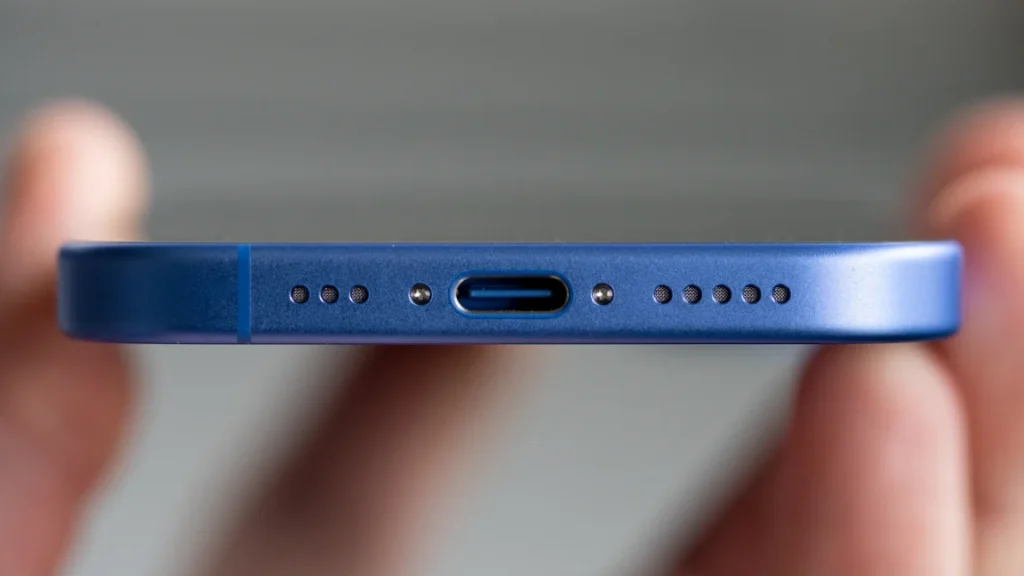
Apple claims that the iPhone 16 can support up to 22 hours of video playback, 18 hours of streamed video, and 80 hours of audio playback. Our battery evaluation involved streaming HD video over Wi-Fi with the screen brightness set to maximum. In this assessment, the iPhone 16 achieved a duration of 17 hours and 47 minutes, marking a significant enhancement over the iPhone 15, which lasted 16 hours under identical conditions. Although the iPhone 16 does not match the 16 Pro Max, which lasted 22 hours and 5 minutes, it surpasses most Android competitors. The S24 recorded a duration of 13 hours and 5 minutes, while the Pixel 9 lasted 11 hours and 45 minutes in the same test.
The iPhone 16 also offers competitive charging capabilities. All four models of the iPhone 16 support MagSafe wireless charging at up to 25W, Qi2 charging at up to 15W, and standard Qi charging at 7.5W. To achieve the fastest charging speeds, a 30W charging brick is necessary. While a charger is not included in the box, a braided USB-C cable is provided. In our testing, the iPhone 16 took 31 minutes to reach a 50% charge and 66 minutes to achieve a full charge, which is a 19-minute improvement over the iPhone 15 and outperforms both the S24 (1 hour, 22 minutes) and the Pixel 9 (1 hour, 45 minutes).
Connectivity: On Par With the Pro
This year, all iPhone models seem to feature a uniform set of radios, with a slight distinction between the iPhone 16 and 16 Plus compared to the 16 Pro and 16 Pro Max. The standard models are equipped with single-band GPS, whereas the Pro variants offer dual-band GPS capabilities.
Thanks to the shared Qualcomm Snapdragon X75 modem, 5G functionality remains consistent across all models. The iPhone 16 supports both sub-6GHz and mmWave 5G, allowing it to connect to a wide range of 4G and 5G networks globally. In the United States, it is compatible with the necessary frequencies for the robust mid-band 5G services provided by AT&T, T-Mobile, and Verizon.
In my evaluation of the iPhone 16 on Verizon’s 5G network, I observed that its performance was on par with that of the 16 Pro Max. It achieved impressive download speeds of 854Mbps and upload speeds of 191Mbps. Even in areas with weak coverage, the device maintained a respectable performance, recording 59Mbps for downloads and 38Mbps for uploads. The iPhone 16 has made a significant upgrade from the Wi-Fi 6 radio found in the iPhone 15 to Wi-Fi 7, resulting in noticeable speed enhancements. On my home network, the iPhone 16 reached speeds of 734Mbps for downloads and 451Mbps for uploads, reflecting a 25% increase compared to the iPhone 15 and aligning with the performance of the 16 Pro Max. Additionally, it excelled at the network’s edge, achieving 23Mbps compared to the iPhone 15’s 7Mbps.
Apple has also incorporated the Thread smart home networking standard into the iPhone 16, a feature absent in the iPhone 15, enabling newer iPhones to communicate with a greater number of connected devices within the home environment.
The iPhone 16 is equipped with a Bluetooth 5.3 radio for personal networking, and codec support remains largely unchanged, including AAC, APAC, MP3, Apple Lossless, and FLAC. The device connects seamlessly to true wireless earbuds.
In terms of voice calls, the iPhone 16 performs well, providing clear and loud conversations. The earpiece delivers ample sound at 74dB, and the Voice Isolation feature effectively minimizes background noise. However, the stereo speakers are merely adequate, producing an output of 79dB, which is sufficient to fill an average-sized.
Camera: Taking Control
The iPhone 16 features the same Camera Control button found in the Pro models, strategically located near the bottom of the right edge, where the user’s thumb naturally rests while holding the device. A quick press of the Camera Control activates the camera, while a subsequent press captures an image. Additionally, a press-and-hold action initiates video recording. Notably, the Camera Control is not a traditional mechanical button; rather, it is a touch-sensitive sapphire crystal equipped with haptic feedback that simulates the sensation of a button press. When utilizing the camera app, a gentle press on this key provides access to a variety of advanced features, including exposure settings, depth of field adjustments, zoom options, camera selection, styles, and tone adjustments. Although adjusting these settings individually is straightforward, transitioning between them—such as from zoom to tone—requires a series of precise touches and swipes that may take some practice to master. Users who prefer a simpler experience can opt to open the camera and take photos without engaging with these additional settings. However, those seeking greater control over their photography will find a wealth of options available.
The device is equipped with a 48MP f/1.6 Fusion camera, akin to that of the Pro models. The default configuration captures 48MP full-resolution images, which are combined with binned 12MP shots. According to Apple, this process results in a 24MP final image that leverages the detail of the full sensor along with the enhanced light-gathering capabilities of Quad-Bayer binning. Users have the option to take photos at the full 48MP resolution, albeit in JPEG format only. The camera also allows for high-quality 2x zoom shots by utilizing the central 12MP portion of the sensor. While the iPhone 16 supports up to 10x digital zoom through cropping with the main sensor, it lacks the 5x optical telephoto camera found in the Pro models. The ultra-wide camera features a 12MP sensor with an f/2.2 aperture and a 120-degree field of view. On the front, the TrueDepth selfie camera is equipped with a 12MP sensor at f/1.9. This year introduces new shooting modes, including macro photography and spatial photos.
Software: iOS 18 for Now, With AI to Follow
The iPhone 16 is equipped with iOS 18 upon release. Users can anticipate a minimum of five years of operating system and security updates from Apple. In contrast, Google and Samsung offer seven years of support for their respective Pixel and Galaxy S series smartphones.
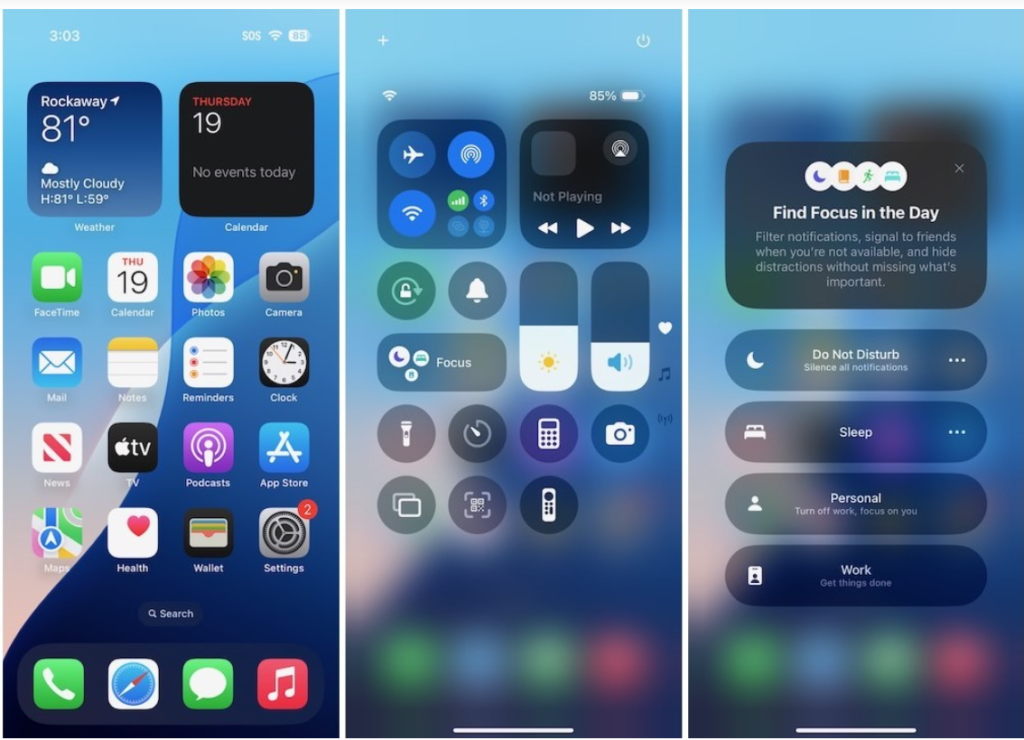
A standout feature of iOS 18 is the comprehensive customization of the home screen. Users can resize and change the color of app icons, effortlessly toggle between light and dark modes, and completely reorganize quick controls, among other enhancements. While these updates may seem minor, they are likely to resonate with those who have previously found the iOS home screen to be somewhat rigid. Additionally, Apple has revamped the Photos app, introduced new RCS chat support in iMessage, and enhanced the functionality of the calculator app. The iPhone 16 possesses the capability to support Apple Intelligence; however, users will need to wait a little longer for its full implementation. Apple intends to roll out the initial set of Apple Intelligence features in iOS 18.1 in October, with further updates scheduled for November, December, and extending into 2025. Certain features of Apple Intelligence, such as Writing Tools and the updated Siri, are currently available for testing in the iOS 18.1 public beta.
Verdict: Your Best Bet for an iPhone 16
The iPhone 16 stands out as one of the most comprehensive base models introduced by Apple. It boasts a meticulously crafted design, impressive battery longevity, rapid wireless connectivity, and competent camera capabilities. Features such as the Action Button, Camera Control, and fast charging bring it nearly on par with the Pro variants. Additionally, the inclusion of the A18 processor ensures compatibility with Apple Intelligence upon its release later this year. While some users may opt for the iPhone Pro for enhanced performance, an always-on display, or superior camera functionality, others may favor the larger screen and extended battery life offered by the 16 Plus. Nevertheless, due to its optimal balance of affordability and functionality, the iPhone 16 is the model we recommend for the majority of consumers.
Apple iPhone 16
